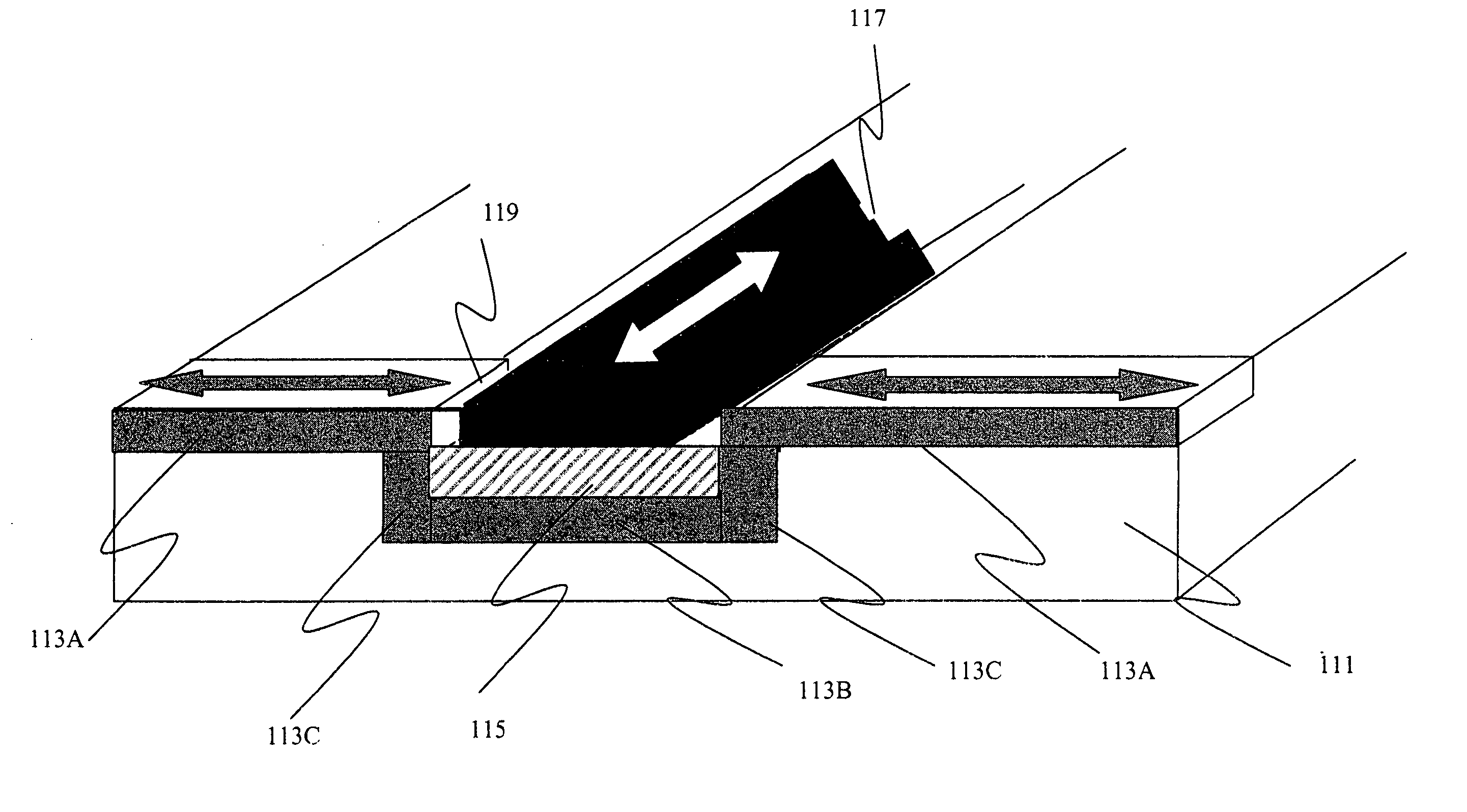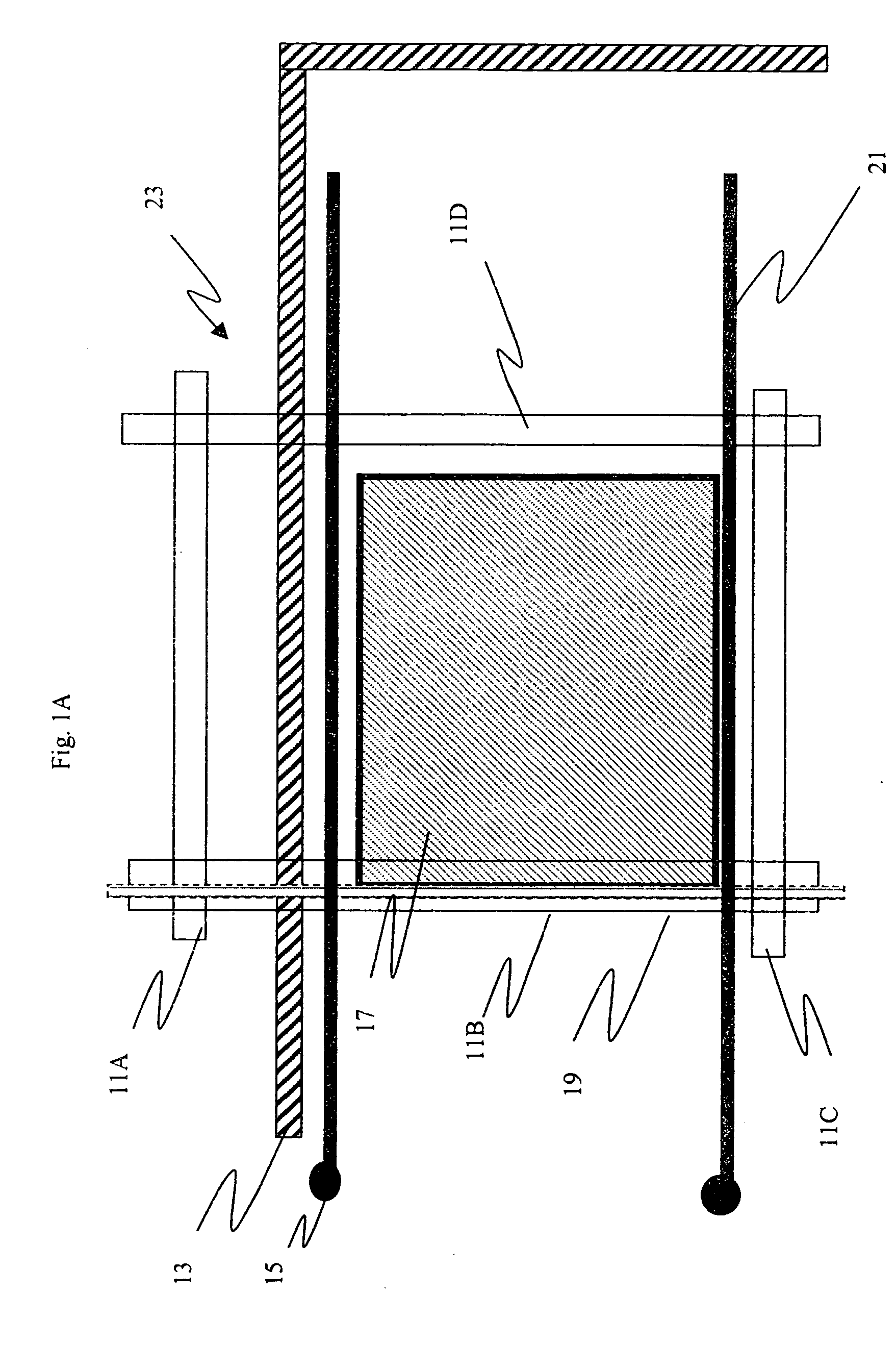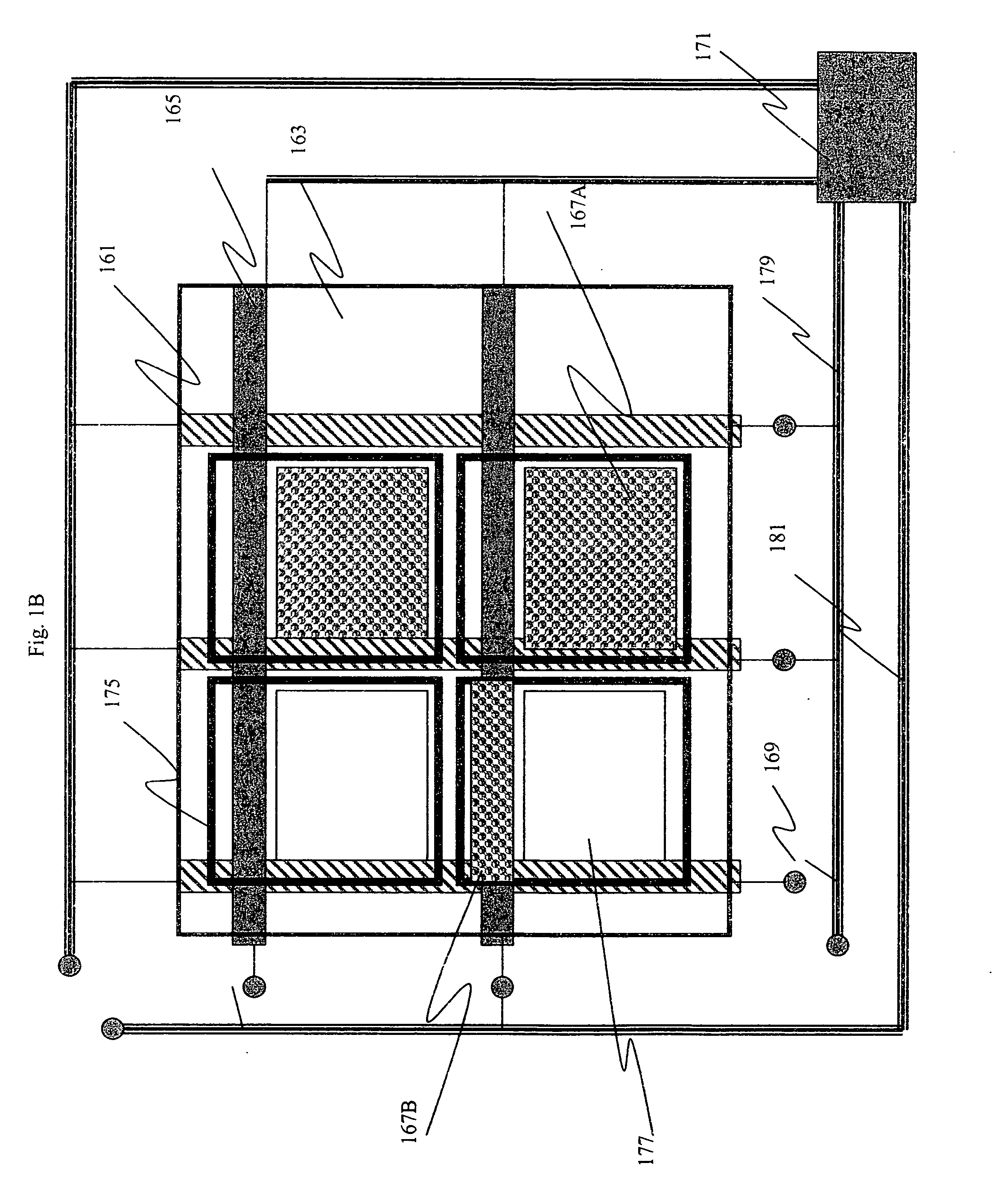Article comprising conductive conduit channels
a conduit channel and conductive technology, applied in the direction of dielectric characteristics, instruments, conductive pattern formation, etc., can solve the problems of insufficient other applications, insufficient size requirements for flexible circuits and rigid printed circuits, and insufficient size requirements for semiconductors and electrical connections between semiconductors and substrates, so as to reduce the height or z-direction thickness of the display, improve light transmission, and prevent shorting
- Summary
- Abstract
- Description
- Claims
- Application Information
AI Technical Summary
Benefits of technology
Problems solved by technology
Method used
Image
Examples
examples
[0155] In this example, polycarbonate V shaped conduits were formed integral to a polycarbonate 100 micrometer sheet. A conductive, transparent form of polythiophene was applied into the V shaped conduits creating a transparent conductive sheet. This invention will demonstrate the conductive and transmissive properties of the polymer sheet containing the conductive, transparent polymer.
[0156] The V shaped conduits were made by casting melted polcarbonate against a heated roller containing the negative of the V groove pattern. The V-groove patterned roller was manufactured by precision machining, utilizing a wire EDM cutting tool, the negative of the V groove pattern into the surface of a smooth steel roller.
[0157] The V groove patterned roller was used to create the integral polycarbonate conduits by extrusion casting a polycarbonate polymer from a coat hanger slot die comprising substantially 98.0% 68 melt index CD grade polycarbonate (Bayer Chemical), 1.5% antioxidant and 0.5% r...
example 2
This Example is Both in Past and Present Tense, Revise
[0164] An electromodulating display cell was formed by extrusion roll molding a V-groove pattern in a sheet of polycarbonate as describe in the above example. The V-groove was further made conductive as per the above example. The sample was then spun coated with an organic resin solution that was a negative photo-resist. It should be noted that an area of the V-groove needs to be left uncoated on at least 2 sides for electrical connections. This is needed so the electrode formed by the V-groove with the conductive material can be switch from positive to negative or off. The material is SU-8 2010 series (Y111058) manufactured by MicroChem. A layer of approximately 10 micron is spun coated at 3000 PRM.
[0165] The sample is prebaked for approximately 3 minutes at an elevated temperature of approximately 65° C. A photo mask is prepared separately using Kodak Direct Image Setting Film (available from Eastman Kodak Company) and laser...
example 3
[0168] This example is another electromodulating display. A polycarbonate sheet with multiple pixels is prepared to look like FIG. 6. A polycarbonate sheet is grooved to form a trenches in the polymer sheet 121 that correspond to flag electrode bus-bar 123A that feeds flag electrode 125, collector electrode bus-bar 127 that feeds collector electrode 129, gate electrode bus-bar 131 that feeds gate electrode 135 and helper bus-bar electrode 137 that feeds helper electrode 139. The V-groove trenches formed are approximately 10 to 15 microns deep. The flag electrode bus-bars trenches (123A), gate bus-bar electrode trenches 131, collector electrode bus-bar trenches 127 and helper bus-bar electrode trenches 137 is patterned coated with a nano gold particle with a mean particle of approximately 5 nm. The gold particles were than sintered with a laser to form a continuous network of conducting metal in the trenches. The metal thickness in the trenches is less than 5 microns in thickness. A ...
PUM
| Property | Measurement | Unit |
|---|---|---|
| diameter | aaaaa | aaaaa |
| reflectance | aaaaa | aaaaa |
| reflectance | aaaaa | aaaaa |
Abstract
Description
Claims
Application Information
 Login to View More
Login to View More - R&D
- Intellectual Property
- Life Sciences
- Materials
- Tech Scout
- Unparalleled Data Quality
- Higher Quality Content
- 60% Fewer Hallucinations
Browse by: Latest US Patents, China's latest patents, Technical Efficacy Thesaurus, Application Domain, Technology Topic, Popular Technical Reports.
© 2025 PatSnap. All rights reserved.Legal|Privacy policy|Modern Slavery Act Transparency Statement|Sitemap|About US| Contact US: help@patsnap.com



